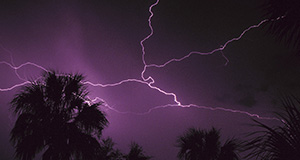Resumen
This article introduces NOAA Atlas 14 and explains how to use it to help Extension agents and the general public estimate the frequency of any storm event of interest. The frequency estimate of a storm event using NOAA Atlas 14 helps the user to understand how large a storm is in relation to the historical storm events that occurred at a certain location. In addition, the information on the estimate’s confidence interval provided by NOAA Atlas 14 is expected to help people better understand the probabilistic nature of rainfall events. Written by Young Gu Her, Eban Bean, and Christopher Martinez, and published by the UF/IFAS Department of Agricultural and Biological Engineering, May 2023.
Citas
Her, Y. G., W. R. Lusher, and K. W. Migliaccio. 2018. “How Likely Is a 100-Year Rainfall Event During the Next Ten Years?” EDIS 2018 (2): AE523, 3/2018. https://doi.org/10.32473/edis-ae523-2018
NOAA CPO. 2023. “NOAA Atlas 14 Precipitation Frequency Atlas of the U.S.” Accessed on April 6, 2023. https://www.youtube.com/watch?v=bD623aYVxeE&ab_channel=ClimateProgramOffice
NOAA NWS. 2023. “5. Precipitation Frequency Data Server.” Accessed on April 6, 2023. https://www.weather.gov/media/owp/hdsc_documents/NA14_Sec5_PFDS.pdf

